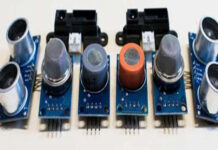The drone propellers market has witnessed remarkable growth in recent years, driven by the increasing adoption of drones across various industries and the expanding consumer interest in recreational drone use. As of 2023, The drone propellers market is estimated to reach valuation of US$ 867.4 million in 2023 and will top US$ 4,388.2 million by 2033, growing with a CAGR of around 17.6 % from 2023-2033.
One of the primary factors fueling the growth of the drone propellers market is the widespread utilization of drones in various applications. Drones have become integral tools in sectors such as agriculture, construction, surveillance, and logistics, among others. The versatility of drones has led to increased demand for specialized propellers that can enhance performance and efficiency. Propellers play a crucial role in determining a drone’s maneuverability, stability, and overall flight characteristics, making them a key component in the rapidly expanding drone industry.
The agriculture sector has emerged as a significant contributor to the demand for drone propellers. Drones equipped with advanced sensors and imaging technology are increasingly being used for crop monitoring, precision agriculture, and spraying pesticides. Efficient and reliable propellers are essential for ensuring stable and controlled flights, allowing drones to capture accurate data and perform precise agricultural tasks. As farmers embrace technology for improved efficiency and productivity, the demand for high-quality drone propellers continues to rise.
In the construction industry, drones equipped with cameras and mapping capabilities are utilized for surveying, mapping, and monitoring construction sites. These applications require drones to navigate through complex environments, making the role of propellers crucial in ensuring safe and accurate operations. The construction sector’s growing reliance on drone technology is driving the need for durable and high-performance propellers, contributing to the expansion of the drone propellers market.
Moreover, the consumer market for drones has experienced a surge in popularity, driven by recreational activities, photography, and racing events. Enthusiasts and hobbyists are increasingly investing in high-performance drones, leading to a higher demand for specialized propellers that enhance speed, agility, and overall flight experience. As the consumer drone market continues to grow, the drone propellers market is expected to witness sustained demand from this segment.
The evolution of drone technology has also led to advancements in propeller design and materials. Manufacturers are focusing on developing lightweight yet durable propellers using materials such as carbon fiber and composite materials. These innovations aim to improve overall drone performance, extend flight times, and enhance energy efficiency. As a result, the market is witnessing a shift towards more sophisticated and specialized propeller designs that cater to specific industry requirements.















